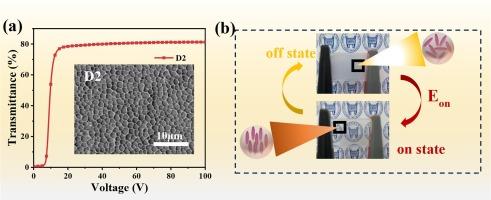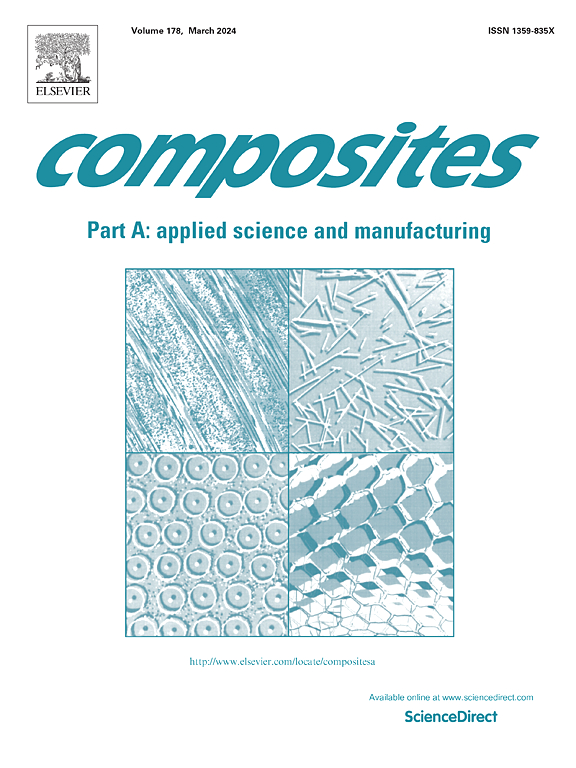具有高对比度和低驱动电压的苯基基含氟聚合物分散液晶复合薄膜
IF 8.1
2区 材料科学
Q1 ENGINEERING, MANUFACTURING
Composites Part A: Applied Science and Manufacturing
Pub Date : 2024-11-17
DOI:10.1016/j.compositesa.2024.108591
引用次数: 0
摘要
聚合物分散液晶(PDLC)是一种复合材料,通常由液晶/单体混合物在聚合过程中发生相分离而得到,在智能窗户中具有潜在的应用前景。在这项工作中,通过改变苯环的数量来调节丙烯酸苯酯单体的刚性和柔性,并讨论了它们对 PDLC 的形态和电光性能的影响。结果表明,由一个苯环的单体形成的 PDLC 薄膜具有更好的性能。此外,对带有一个苯环的单体进行氟化处理可进一步提高整体性能。对比度从 138 显著提高到 175,但驱动电压保持在较低值(6.9 V)。这项工作为优化 PDLC 薄膜的电光性能提供了一种选择。本文章由计算机程序翻译,如有差异,请以英文原文为准。

Phenyl group-based fluorinated polymer dispersed liquid crystal composite films with high contrast ratio and low driving voltage
Polymer dispersed liquid crystal (PDLC) is a type of composite materials which is usually obtained by the phase separation during polymerization of liquid crystal/monomer mixtures, and it has shown potential applications in smart windows. In this work, the rigidity and flexibility of phenyl acrylate monomers were regulated by varying the number of benzene rings and their influences on the morphology and electro-optical properties of PDLC were discussed. The results showed that the PDLC films formed by monomers with one benzene ring possessed better performance. In addition, fluorination of monomers with a benzene ring could further enhance overall performance. The contrast ratio was significantly improved from 138 to 175, but the driving voltage is maintained at a lower value (6.9 V). This work provides a choice for optimizing electro-optical properties of PDLC films.
求助全文
通过发布文献求助,成功后即可免费获取论文全文。
去求助
来源期刊

Composites Part A: Applied Science and Manufacturing
工程技术-材料科学:复合
CiteScore
15.20
自引率
5.70%
发文量
492
审稿时长
30 days
期刊介绍:
Composites Part A: Applied Science and Manufacturing is a comprehensive journal that publishes original research papers, review articles, case studies, short communications, and letters covering various aspects of composite materials science and technology. This includes fibrous and particulate reinforcements in polymeric, metallic, and ceramic matrices, as well as 'natural' composites like wood and biological materials. The journal addresses topics such as properties, design, and manufacture of reinforcing fibers and particles, novel architectures and concepts, multifunctional composites, advancements in fabrication and processing, manufacturing science, process modeling, experimental mechanics, microstructural characterization, interfaces, prediction and measurement of mechanical, physical, and chemical behavior, and performance in service. Additionally, articles on economic and commercial aspects, design, and case studies are welcomed. All submissions undergo rigorous peer review to ensure they contribute significantly and innovatively, maintaining high standards for content and presentation. The editorial team aims to expedite the review process for prompt publication.
 求助内容:
求助内容: 应助结果提醒方式:
应助结果提醒方式:


